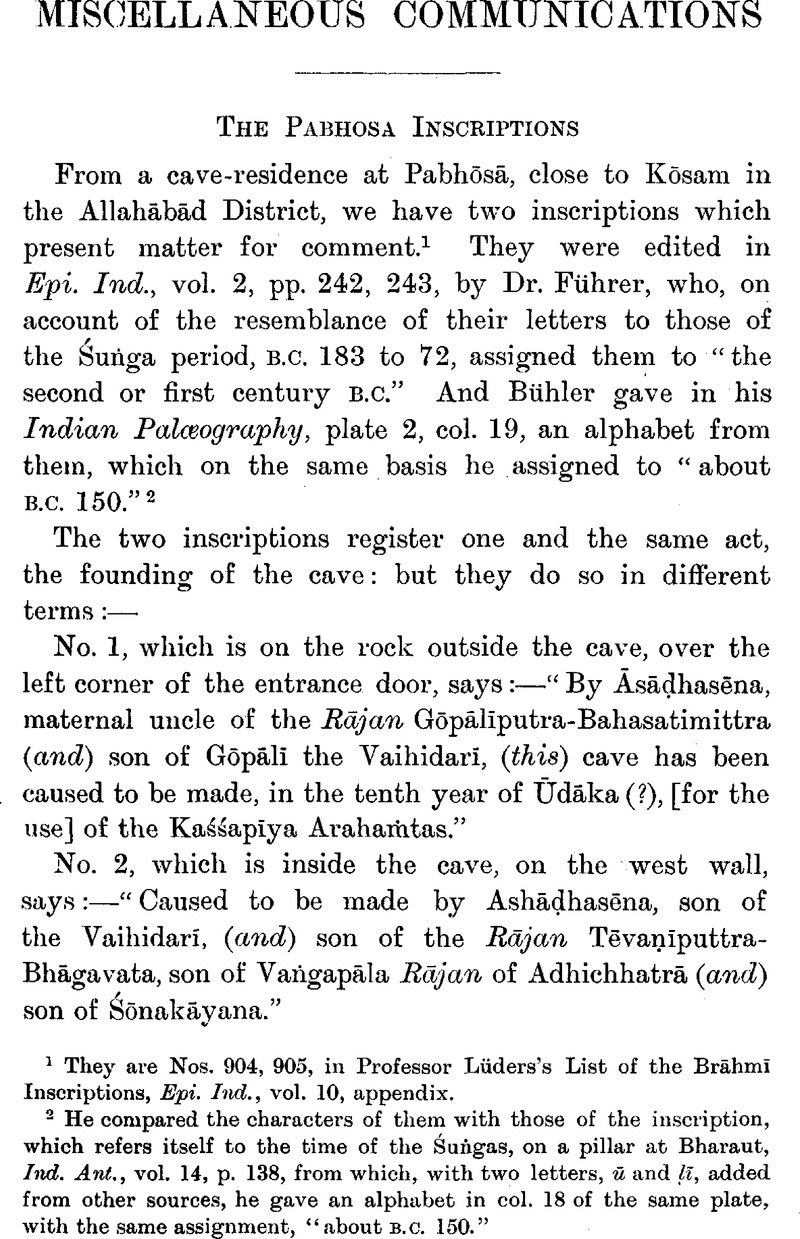Article contents
Abstract

- Type
- Miscellaneous Communications
- Information
- Copyright
- Copyright © The Royal Asiatic Society 1914
References
page 89 note 1 They are Nos. 904, 905, in Professor Luders's List of the Brāhmī Inscriptions, Epi. Ind., vol. 10, appendix.Google Scholar
page 89 note 2 He compared the characters of them with those of the inscription, which refers itself to the time of the Śuṅgas, on a pillar at Bharaut, Ind. Ant., vol. 14, p. 138Google Scholar, from which, with two letters, ū and ḷī, added from other sources, he gave an alphabet in col. 18 of the same plate, with the same assignment, “about B.C. 150.”
page 90 note 1 In No. 1, 1. 6, the word ūdākasa is damaged and doubtful: but the last syllable of it is at any rate not sya. The first syllable seems to be the long ū; not the short u as read by Professor Lüders.
page 90 note 2 See Bühler, , ii, 34, viii–xii.Google Scholar
page 91 note 1 In this r in both the records, and in many other letters too, the straight lines which were intended have not always been well followed: but the intention is plain.
page 91 note 2 In mātulēna, 1. 3, the u is of a different type, as was customary in connection with the letter t; being a short straight horizontal stroke to the right from the end of the lower right-hand part of the t, as in Bühler, 's ii, 23Google Scholar, v, viii, xxiv.
page 92 note 1 The k in particular is such a letter: in these two inscriptions, however, we have only the k which matched the second r of No. 1 and the first r of No. 2; not the k, with the bend up to the left at the bottom of the vertical stroke, which answered to the second r of No. 2.
page 92 note 2 This expression is a convenient way of indicating the limits and size of such letters as were made like our a, c, e, m, etc, without any projections above as in b, d, f, or below as in g, j, p. But, whatever may have been done in subsequent times, the more ancient writers evidently did not use much, if at all, the expedient of ruling two such lines with a view to insuring uniformity in their work; and the result was generally a considerable variation in the relative sizes of all the letters.
page 92 note 3 In 1. 3, ashāḍha seems to have been written, instead of āshāḍha.
page 93 note 1 Figured by Bühler, along with the waved r, in the rī of vaihidarī, No. 1, 1. 4.
- 2
- Cited by


